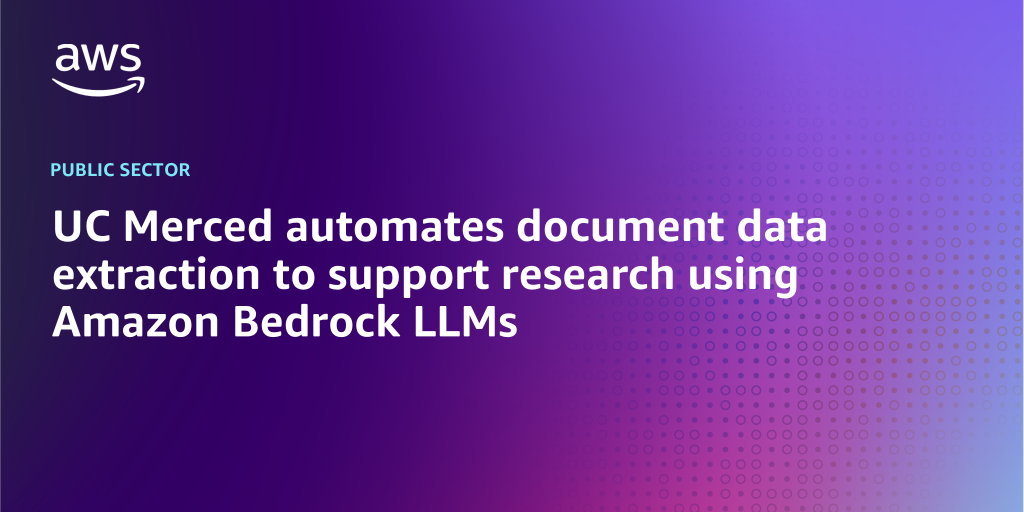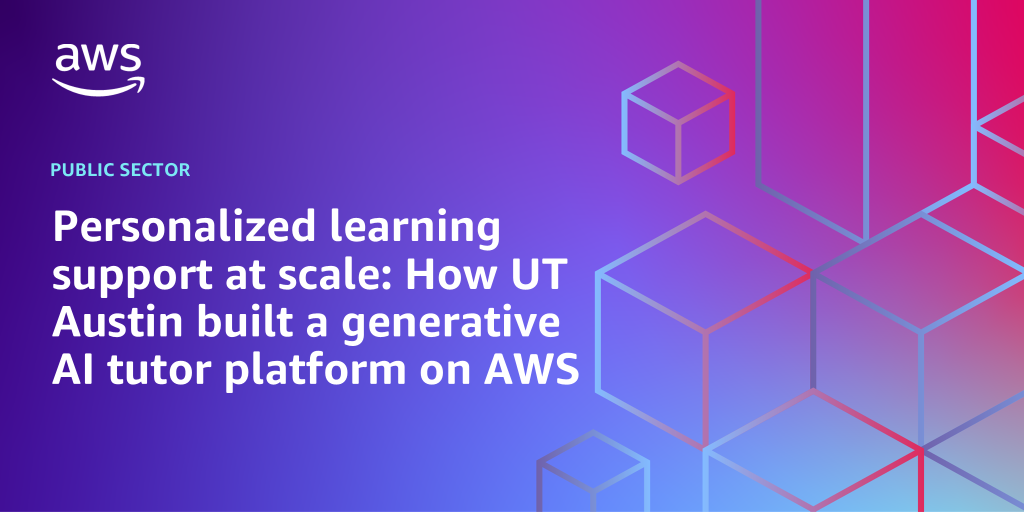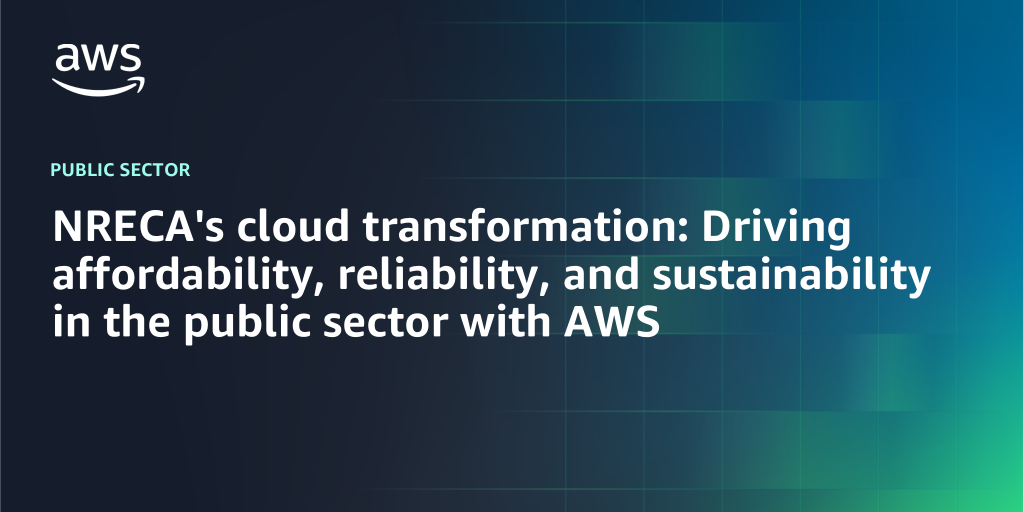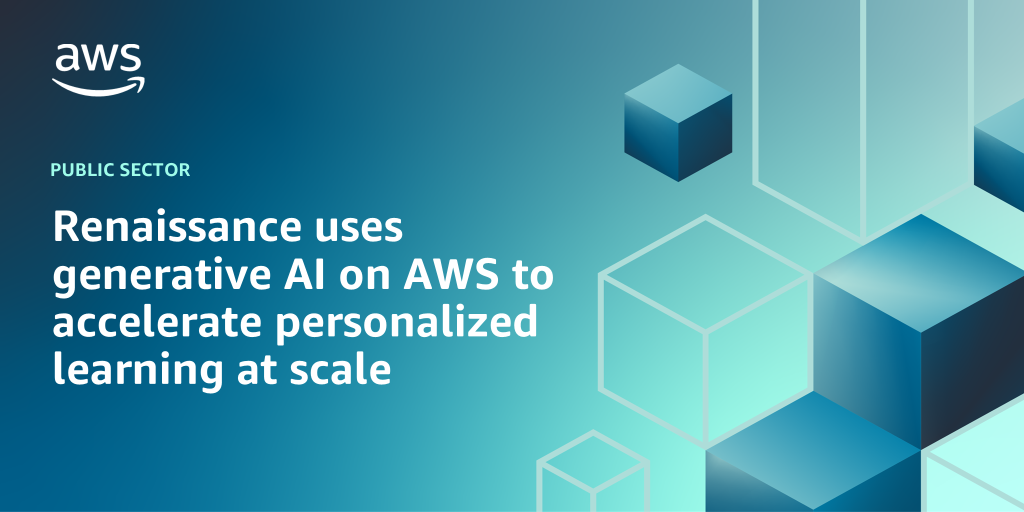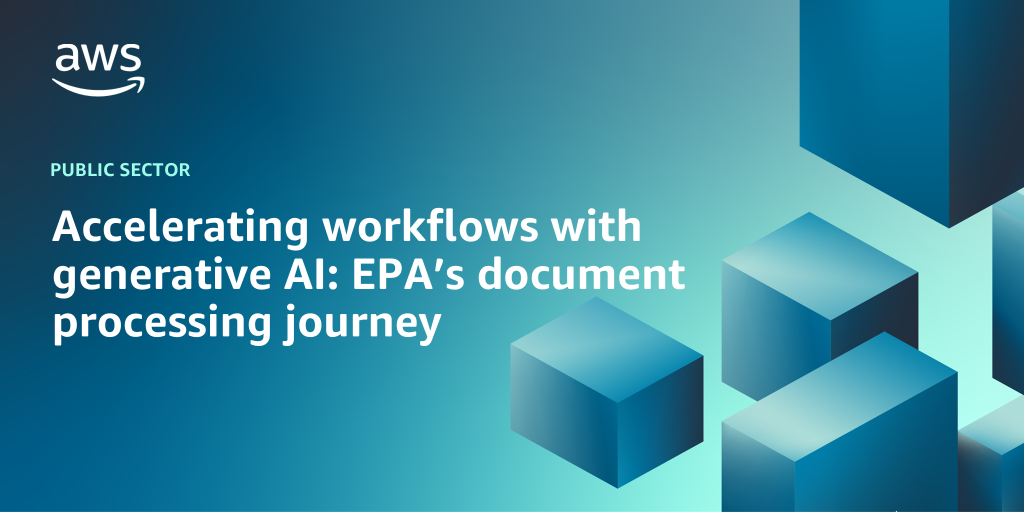AWS Public Sector Blog
Tag: customer story
UC Merced automates document data extraction to support research using Amazon Bedrock LLMs
In the rapidly evolving landscape of academic research, cloud computing and advanced digital services have revolutionized the way scientists collaborate, analyze data, and disseminate findings. AWS is partnering with higher education institutions to revolutionize how research is conducted.
Personalized learning support at scale: How UT Austin built a generative AI tutor platform on AWS
Building on a commitment to using innovative technologies to enhance the learning experience, the University of Texas at Austin (UT Austin) collaborated with AWS to develop UT Sage, a faculty-guided, generative AI tutor platform. UT Sage provides conversational course-related support on-demand while aligning with responsible AI frameworks and preserving the essential connection between faculty and students. In this post, learn how UT Austin worked with the AWS Generative AI Innovation Center to build UT Sage and what this experience can teach other institutions navigating the promise and responsibility of AI in higher education.
University of Arkansas – Pulaski Tech increases campus app engagement by 253% with generative AI from AWS Partner Modo Labs
To support a student population that includes many nontraditional learners, such as working adults, caregivers, and first-generation learners, the University of Arkansas – Pulaski Technical College (UA-PTC) needed a faster and more intuitive way to deliver campus information. UA-PTC worked with Modo Labs, an AWS Partner, to launch MyAgent, a generative artificial intelligence agent built on AWS that delivers real-time, verified answers to conversational student questions directly within the college’s Modo-powered app.
How Truth For Life transformed its viewer analytics while optimizing costs
In this post, you’ll see how the nonprofit Bible ministry, Truth For Life, built a cost-optimized viewer analytics pipeline on AWS to gain new insights on their followers and help develop new growth strategies.
NRECA’s cloud transformation: Driving affordability, reliability, and sustainability in the public sector with AWS
The National Rural Electric Cooperative Association (NRECA) recently completed a migration from a traditional on-premises data center and began using AWS Cloud services. Originally planned for five years, NRECA finished in four. Like most technology, it wasn’t as simple as flipping a switch, but if your organization is considering a similar move, hopefully the NRECA’s experience can act as a guide. Read this post to learn more.
Renaissance uses generative AI on AWS to accelerate personalized learning at scale
As a global leader in K12 educational technology (EdTech) solutions, Renaissance supports over 16 million students across more than 100 countries with a mission to improve learning outcomes for all students, regardless of ability or background. Its data-rich platform helps educators make informed decisions and deliver personalized learning experiences for students. Read this post to discover how Renaissance worked with AWS to develop a scalable, human-in-the-loop solution powered by generative AI.
Accelerating workflows with generative AI: EPA’s document processing journey
In this post, we highlight how two United States Environmental Protection Agency (EPA) leaders are reimagining EPA’s mission delivery with intelligent document processing (IDP), powered by AWS.
How federal agency leaders are using AWS tools to improve efficiency
Federal agencies are using cloud-based tools to increase productivity, reduce resource use, and improve their ability to efficiently serve the public. This article highlights the pioneering leaders forging new paths into cloud-based government.
PixelGuard: Advancing healthcare data privacy through AI-driven de-identification system for medical imaging research
PixelGuard—built on AWS—is an advanced software solution that deidentifies medical images while preserving clinical relevance and efficacy. It uses over 75 state-of-the-art AI-driven models capable of detecting and redacting multilingual, multi-orientation text across all major formats, alongside configurable metadata anonymization. Read this post to learn more.
Intelsat reimagining cloud access with AWS Direct Connect
Intelsat’s AWS Direct Connect hosted service expands their existing AWS Cloud portfolio, enabling more customers to access secure, high-performance cloud connectivity. The partnership directly benefits media companies through reduced network latency, enhanced security, lower connectivity costs, and simplified cloud resource access. Read this post to learn more.
